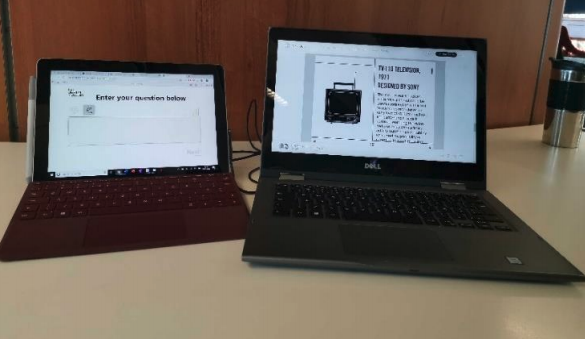Challenge
Museums are growingly using digital technologies to improve the visitor experience. Museum curators spend a lot of time thinking about how to present information to visitors through signs, guides and various types of interactive exhibits. However, there are less occasions where visitors are able to contribute information for the museum.
Aims
- Design an interactive digital technology to improve the experience of visitors for the Design Museum based upon user research
- The technology should let visitors contribute some form of content, leaving a “trace” of their visit
- The technology should be delivered as a prototype which should undergo an evaluation testing
My role
- Conducting observations and interviews to find out about the users' needs
- Developing personas to define who our target audience is
- Proposing initial ideas and drawing sketches
- Creating final designs and hi-fi wireframes
- Evaluating final prototype
User research
Observations
I chose an individual visiting the museum and followed them through their visit. Recorded how they interacted with the museum and made inferences. I chose to come on different days and times to see how the experience changes. The observations really helped identify the nuances in people’s behaviour and how they moved around the museum
Observations revealed that there were three distinct phases of the museum experience: arriving, exploring exhibits, and leaving. During arrival, visitors wandered around trying to establish a sense of direction, needing to ask people or consult signs before moving on. When exploring exhibits, visitors’ engagements with individual exhbits varied but most took the same path around the museum. During the final stage many visitors would visit the seating area on the stairs before leaving, elongating their visits with idle activity.
Why do observations?
Users do not always report accurately back in how they went about or felt doing their task which in our case was how they interacted and felt as they moved around the museum.

Interviews
I interviewed three people who were at the end of their visit for the Design Museum. I asked open ended questions to find more about their experiences and why they came to the museum. The interviewees did not elaborate on their answers, so I had to ask follow up questions to get more complex answers. To improve upon next time, I think I would ask visitors at the beginning of their visit to find out what they are expecting to see at the museum.
Five of the six interviewees were tourists and one was local, all were looking for a low-cost experience that would take several hours to complete. Some visitors had niche interests in cutting edge technologies displayed, 3D printers and other machines, but found the utilisation of the technologies was underwhelming. Several visitors also felt that their visit was too short and wanted to spend more time in the museum, without paying the entrance fees for the paid exhibits. Some visitors were frustrated when interactive exhibits were too childish or too busy to warrant using. All had a previous interest in design, some had professional experience with a depth of knowledge of the field they were hoping to engage with; for others it was a casual interest or hobby, these users were keen to learn more.
| Interviewee 1 | Interviewee 2 | Interviewee 3 | ... | |
|---|---|---|---|---|
| Best thing seen today? | He particularly enjoyed the second floor of the building with the wall of numerous technology devices through the decades. He said it gave him flashbacks of the past and memories of using iconic/legendary tech devices. | Reaslly enjoyed the design of the building, especially the lobby area. He was entusiastic when speaking when describing the building. | Enjoyed the coffee filter (Chemax brand), had a pre-existing interest in coffee, so seeing the designs on display was "cool". | ... |
| Does not do well? | "65 pounds" to get around the whole museum, felt like a lot of sections were blocked off. No obvious central piece or sense of general direction upon arrival. | Wanted more details on exhibits, felt that his knowledge often exceeded what was on offer. | He felt like the museum was quite short overall and would have enjoyed it more if there were other ways to kill time. | ... |
| Interactive displays? | He saw a few displays but didn't interact, felt they were for kids. Would bbe interested in them if there was one that was geared towards adults. | He interacted with the screens at random and could not mention any interaction that stood out. | He did not interact with the screens, felt like they weren't necessary to add benefit to his visit. | ... |
| ... | ... | ... | ... | ... |
Small snippet of collected information from interviews
Define
Persona
Using the user research found in the observations and interviews, a primary and secondary persona was created. As a group we categorised similiar traits and experiences and fed these details into the personas. There was continous refinement of the goals and frustrations as the product developed. I created the personas using Adobe Illustrator. The designs were simple and easy to empathise during the ideation process. Jack Shingher was the primary persona shown below.
Why was the persona Jack Shingher chosen?
He represents the visitors that were keen to find fun stimulating activities that would introduce and engage them with the world of design. His goals are oriented around broader interests that reflect his non-professional association with the field.

User Journeys
We created user journeys for each of the personas. The user journey was mapped as the the route they would take through the Design Museum. It was decided to split them into 3 main phases of their visits: arriving at the museum; exploring the exhbits; leaving the museum. At each stage the emotions of the personas are highlighted by emoji icons and are provided with both their motivations and frustrations.
What did we find out?
The research data in the personas and existing user journey highlighted to us that there was a potential for unique opportunities for the design knowledge of the professionals and enthusiasts to be shared with the casual visitors. The existing user journey showed potential to enhance the ‘exploring exhibits’ phase with activities that utilise the knowledge being gained here. The ‘leaving’ phase also has considerable idle time where visitors are often keen to find further opportunities to gain further enjoyment from their visit. Both areas would become targets for future design work.

Ideation Process
Design goals
Design goals were developed based on the evidence found during user research. These are listed below and were used to help ideate solutions
Goal 1: The technology should provide an opportunity for people to use new, cutting edge technologies in a unique and interesting way
Visitors attending the design museum were very interested in the exhibits displaying new technologies such as 3D Printing and the Mars Rover. In interviews they expressed disappointment that the technologies weren’t being utilised effectively. Visitors also expressed their willingness to use and interact cutting edge technology
Goal 2: The interactive technology should provide an opportunity for users to extend the duration of their visits to the design museum
Visitors expressed discontent at the volume of content and the lengths of their visits. They were hoping that there would be content that would allow them to extend their visits further
Goal 3: The technology should have opportunities for casual visitors to learn about design
Visitors attending the museum were more casual interested in exposing themselves to the world of design, they may not have had as much information to contribute but enjoyed the overall learning experience of the museum
Goal 4: The technology should provide an opportunity for professionals and enthusiasts to engage with their deeper knowledge of the field and contribute this knowledge to the museum experience
Many visitors had in-depth knowledge of design and were interested in finding opportunities to challenge themselves and engage with that knowledge. These visitors have fantastic potential in their ability to contribute information
Goal 5: The technology should provide an opportunity that is robust and still delivers a consistent experience even when the numbers of users fluctuate
Visitors were interested in the interactive displays on offer but felt that they were sometimes too busy to be used. There were several areas of the museum that were observed to have fluctuating numbers of people, particularly the seating area on the stairs between the first and second floors
Initial Sketches
As a team an ideation workshop was held where we went through several ideation techniques such as: constraint removal, worst possible ideas and brain writing. We made sure we did not critique the designs at this early stage. The point of the session was to generate as many alternative designs as possible. Then the designs were categorised into groups of similar ideas. Each group member was the given the task to explore a group for further ideation. Sketching is an important skill as it allows to quickly to generate ideas but also not to feel attached to it.
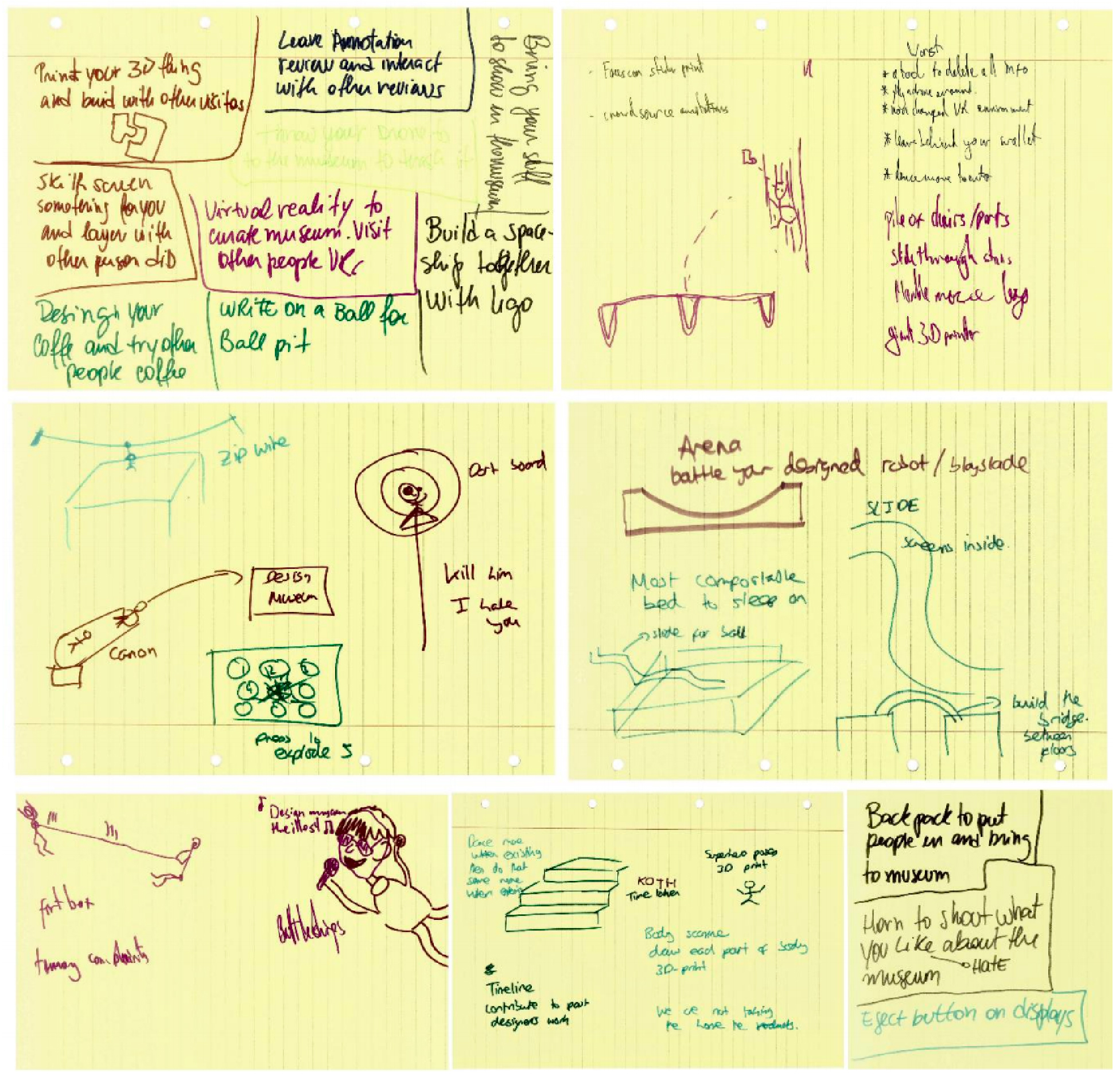
Alternative Design 1: Quiz game
A quiz that visitors could play while sitting in the stairs area, with questions related to the items and techniques they saw while visiting the museum. Players could add questions to the quiz and follow up the results of questions they created.

Alternative Design 2: Battle arena
An arena for visitors to use battling spinning tops. The toys would be built by the visitors, using modular pieces made using the 3D printer and other machinery available in the museum. A leader board would show the best scores and the combatants spinning toy designs to help new combatants.
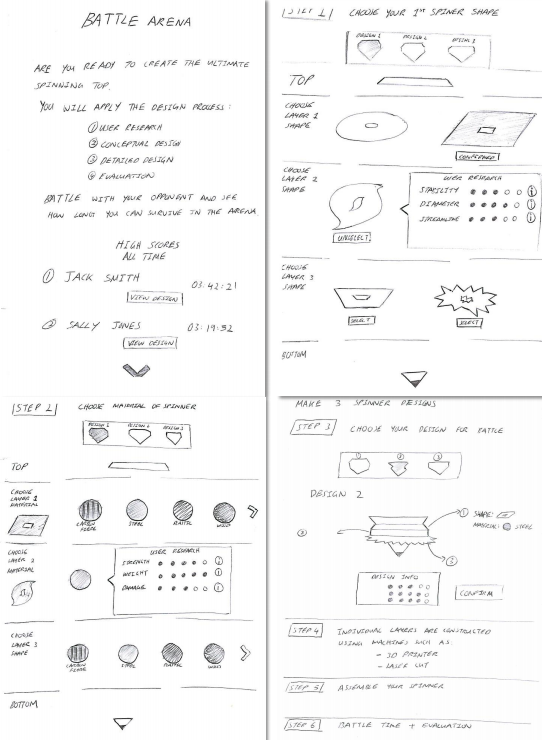
Alternative Design 3: Obstacle course
An obstacle course to be crossed by a remote-control vehicle. Visitors would be able to select predesigned objects to construct pathways to allow the vehicle to complete the course.

Moving forward, we decided to develop ‘Alternative Design 1’ due to its greater potential to capture design goals 3 & 4, which are centred around the relationship between the more professional visitors as ‘information providers’ and the casual visitors as ‘learners’.
Developing ideas
Firstly, we explored by looking at the various ways the visitors can answer the questions. There were two ways that stood out which was either building a controller to answer questions or using balls on the stairs travelling in tunnels


We liked the idea of building a controller as the user will have sense of creating something while they are in the museum. However we wanted to remove the process of building it in a station and would prefer to create it near the stairs.

Then we looked into developing ways of the visitors inputting questions. One idea was to use voice input near the exhbits to provide their questions. Another idea was to use touch screens at the top of the stairs. We decided to use a touch screen interface that has voice input capabilities. Through user research we found some visitors may not want to use just voice for inputting their questions and would need to provide an alternative input method.

Final designs
Question Creation
The final design consisted of having question input stations dotted around the exhbits in the museum. This allows users to create questions based on the the knowledge they have just aquired or from past experiences (Goal 3 & 4).
Each question has one correct answer and three incorrect answers. They can also include photos or videos taken by the visitors. To create a new question, visitors will use the stations scattered in the museum, close to different displays. The questions will be part of the quiz after they are reviewed by the museum staff to ensure accuracy of information and to remove any that might be inappropriate or irrelevant. Visitors can opt to receive statistics (correct response rates, difficulty rating etc.) about their questions by email.
At the time the quiz is launched, initial questions will be provided by the museum. Questions are continuously updated based on the exhibits that are being presented in the museum.

Buildiing controller
To make this experience tactile, and give opportunities for interaction with new and interesting technologies, visitors will build their own controllers using a technology inspired by ‘closed loop’ input systems such as the “Makey Makey”. The system allows visitors to create controllers using different objects (Goal 1).
The objects will be provided by the museum, consisting of items created using the machines in the “Designer Maker User” exhibit, as a way of allowing visitors to interact with products created using 3D printers, laser cutters and CNCs (Goal 1).
To build the controller, users will choose objects from the slot below their seat. Each will have a tag providing a small description of the materials and techniques applied to produce it (Goal 3). To assemble the controller, crocodile clips will be attached to the object, that will become a button.
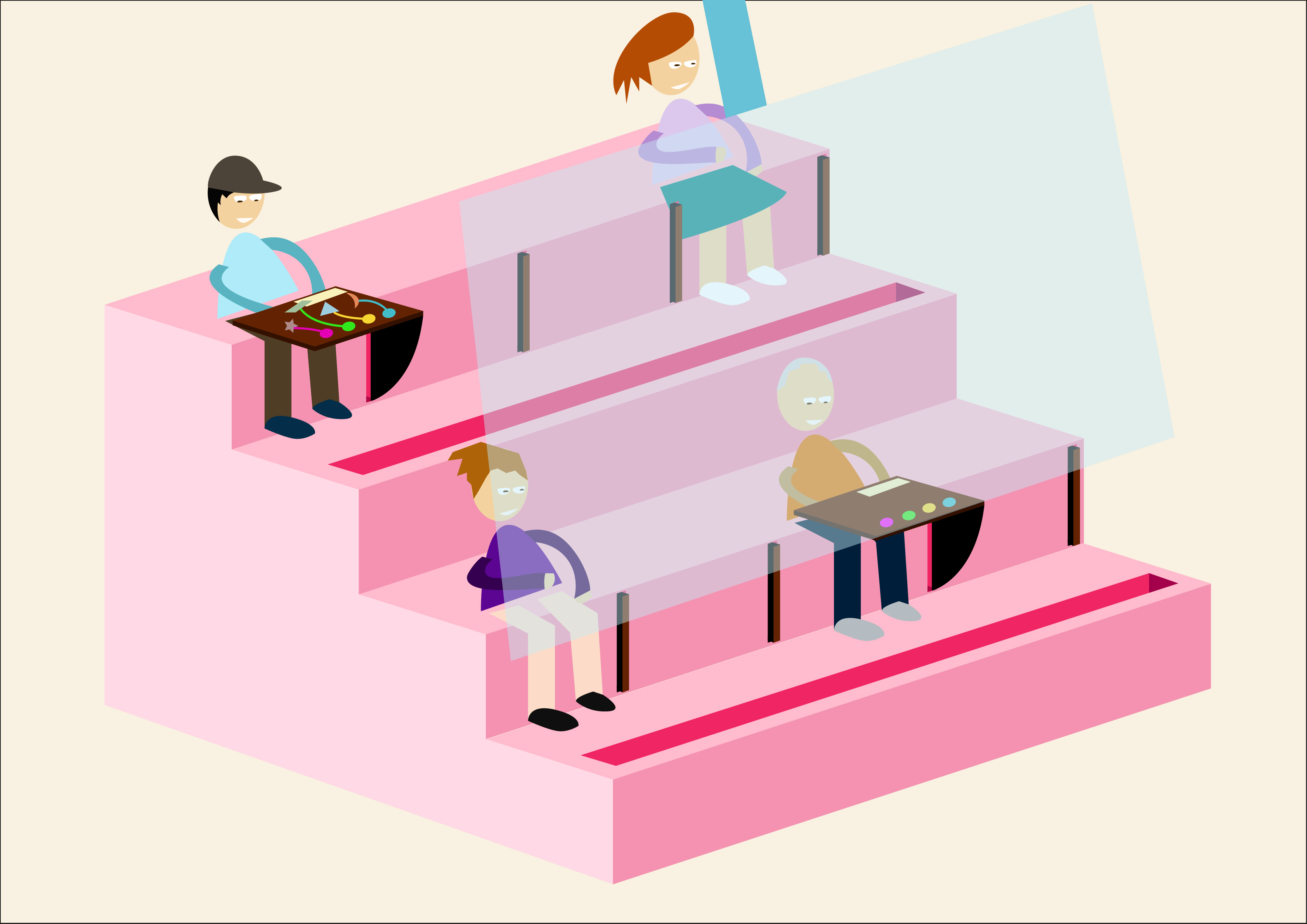
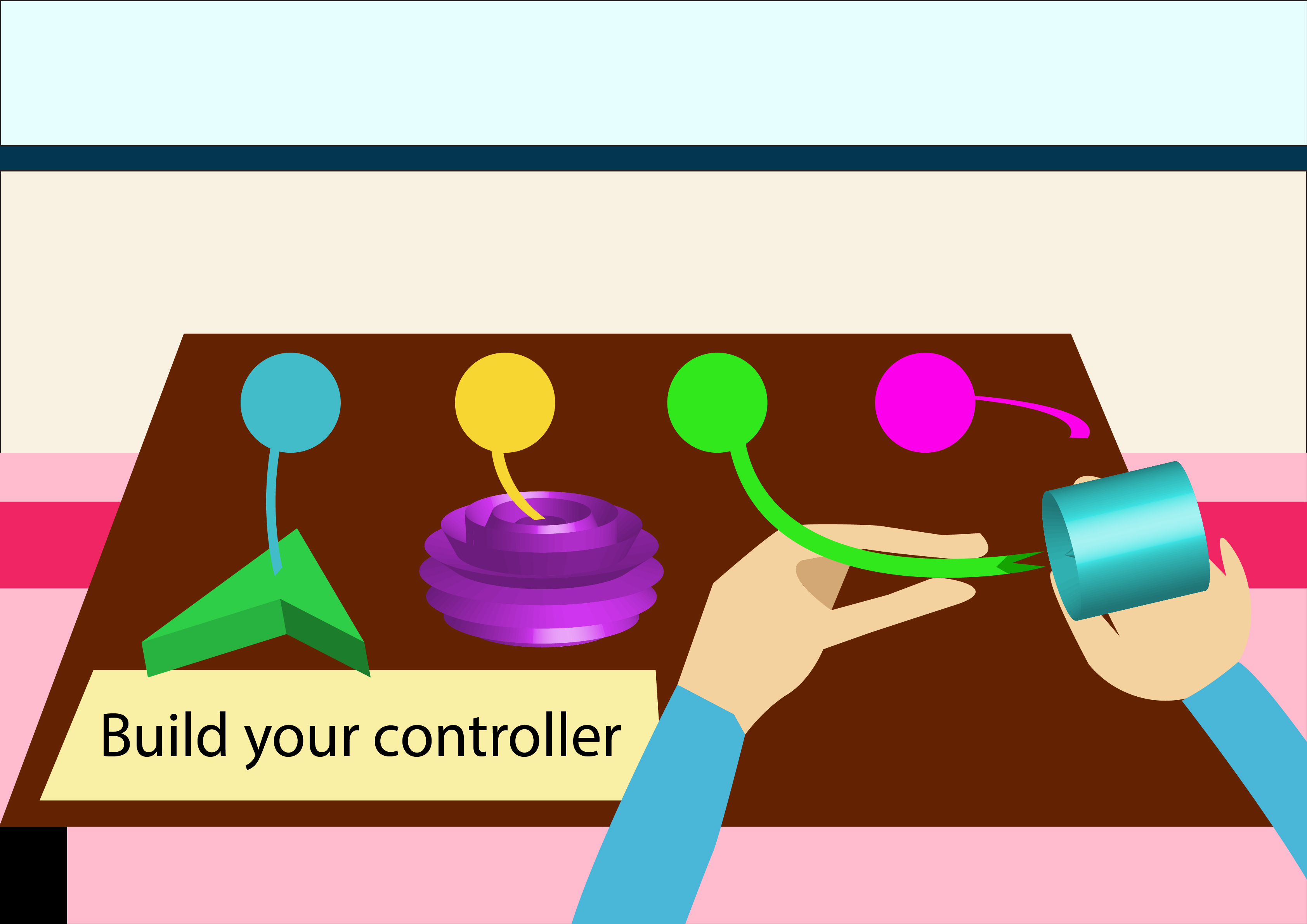
Vote-based quiz game
A quiz game with visitor generated questions about design and the museum exhibits, for the visitors to play after browsing the museums exhibits (Goal 2).
Sitting on the staircase benches, all players see the same questions projected onto a single large screen and vote using a personal controller. When the majority votes for the correct answer, the ‘Combo-meter’ increases. Consecutive correct answers increase the ‘Combo-meter’. If an incorrect answer is voted by the majority, the correct answer is also displayed ensuring that the visitors are still able to learn, despite not achieving the goal of the game (Goal 2); the ‘Combo-meter’ is reset to zero before the next question is displayed. Players can challenge themselves by attempting to be the group with the longest combo that day.
The quiz game uses a poll-based system and multiple input terminals (buildable controllers) which allows the game to maintain the same level of functionality despite constant fluctuation of players (Goal 5). There is no specific start or end point to the game, visitors can join whenever they want to and play for as long as they would like to (Goal 2).
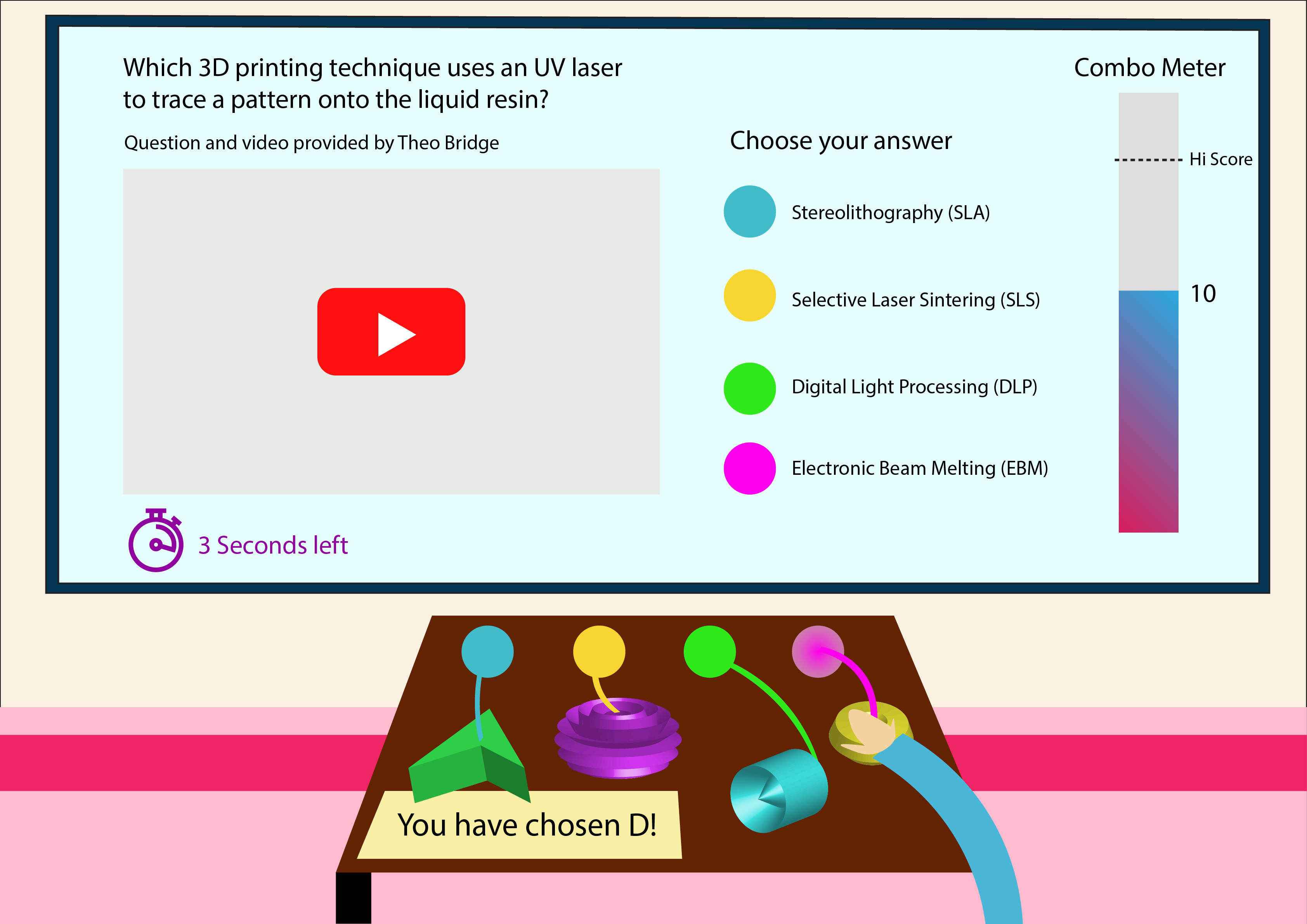
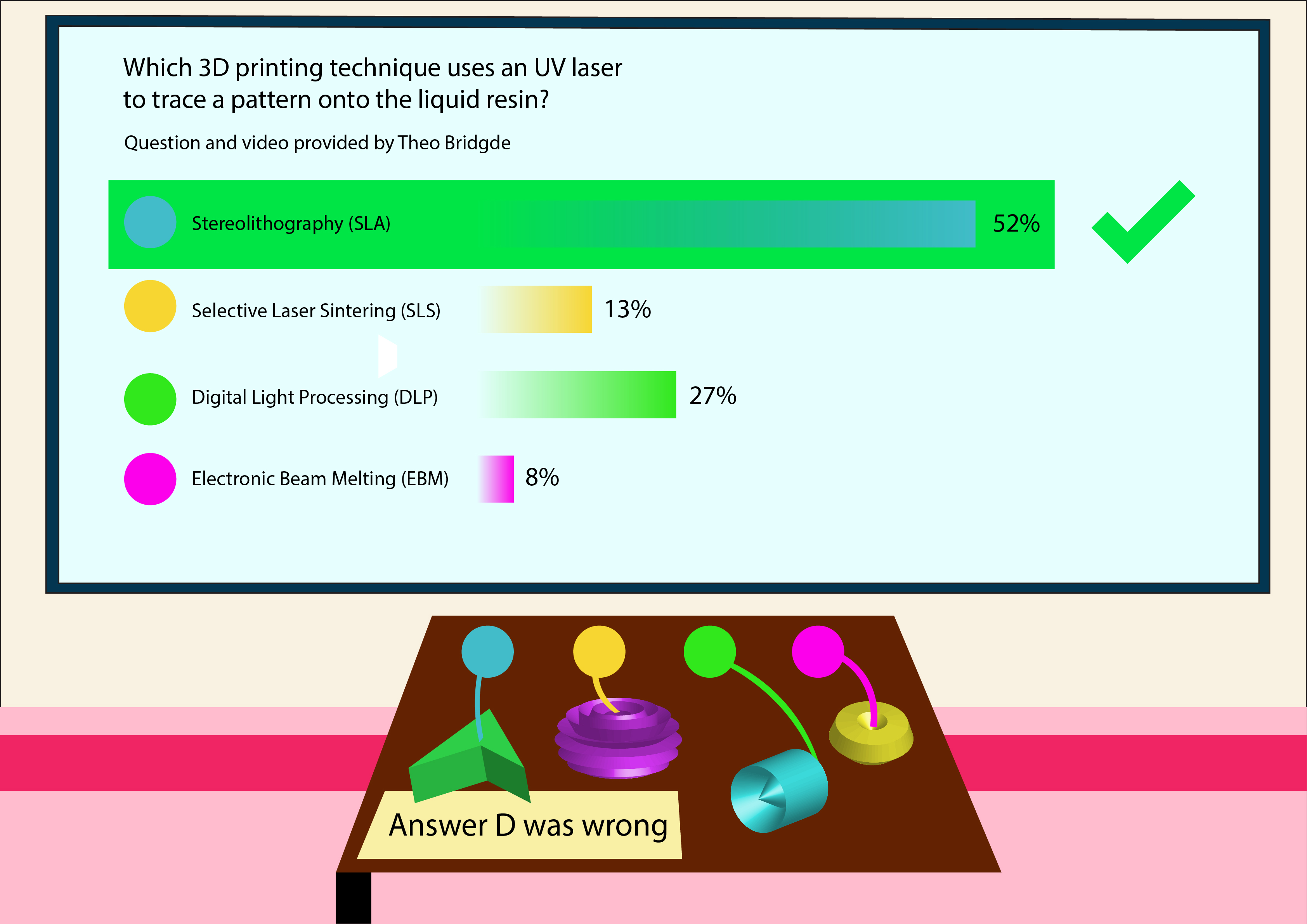
Evaluation
Conducted an expert evaluation to identify usability problems in inputting questions and playing the quiz game. We decided to create a paper protoype for building the controller and using an interactive tablet display using a tablet. A number of issues were found such as providing clearer instructions for building controller, the sound feedback bar should change, the correct answer should be shown even if group selects wrong answer ... etc. Most of the major issues found were solved swiftly after the evalauation and other minor and time-consuming issues were left for a future date.
